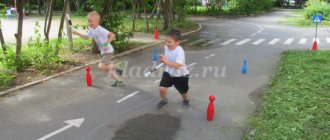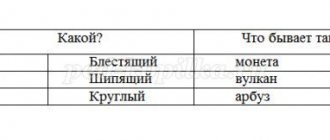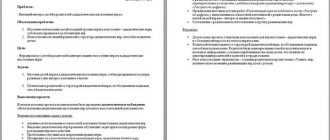Relay games for children 5, 6, 7 years old
Outdoor relay games for children 5-7 years old
Rules of relay games
❀ An equal number of participants who are divided into two teams.
❀ Equal physical strength.
❀ Presence of an adult presenter. He gives the command “Let’s start!”, counts the points and makes sure that the players do not break the rules: do not run out ahead of time, put objects in place, and pass the baton to others on time.
❀ In order for children to understand the rules of the game well, a training competition is organized, without scoring points.
From about 5 years old, children are increasingly attracted to group, team relay games. After all, they have a spirit of competition. In them they learn what a team and the shoulder of a comrade are. Children begin to understand how important it is to obey the rules of the group, to go towards the goal and feel their importance, to make their small contribution to a big cause.
In everyday life it is not always possible to organize a relay race. After all, to create it you need participants - a large group of children. However, the relay can be played with four children. And if moms and dads join them, the game will turn into real “fun starts.” Relay races are always spectacular. It’s good if a support group gathers around you: it will be more fun for both spectators and participants. And if you were unable to gather two teams, play in a narrower circle, without competitive fervor, where friendship and good mood win, where the process is important for the sake of the process itself.
“Unload the car.” The teams have a simple task - to unload the car with bricks. To do this, two boxes with cubes (“brick machines”) are placed on one side of the court, and the players are located on the other side. The participants’ task is to run to the “car”, take the “brick”, return to the starting line, put the burden in the designated place and pass the baton to another participant. The team that moves all the “bricks” the fastest wins.
“Jump through the hoops.” Two teams stand behind each other in a column. 3-4 hoops are laid out on the site. The participants’ task is to run to the turntable (it could be a chair, a bush, a stone, a pillar, or some object) and return back to the starting line. On the way forward, you need to overcome obstacles: pick up each hoop, thread it through yourself and put it in place.
"Move the watermelons" . For this relay you will need six balls of different sizes (three for each team). Each participant is given a task: to carry three “watermelons” to the turntable and return back. The one who dropped the “watermelons” collects them and continues moving towards the starting line. Holding three balls in your hands and running at the same time is a difficult task. Therefore, players move slowly and carefully.
"Ball Competition" . Children stand in a column one after another (at a distance of one step) and pass the ball over their heads to a neighbor behind their back. When the ball falls into the hands of the player completing the column, he runs forward and becomes the head of the group, the rest take a step back. The game continues until all participants try themselves as the leader of the column. There is another variation of this game: pass the ball not over the head, but between the players’ legs.
"The Big Picture" . To play this game, you will need two easels with blank sheets of paper attached to them (you can simplify the task and attach two sheets of Whatman paper to the wall). Place felt-tip pens or thick-tip markers nearby. The presenter gives the teams a task - to paint a picture: a portrait of a person, a cat, a house, a robot, etc. (the task should be simple). Each participant must run to the “easel”, draw one detail of the image and return back. The first team to present its “masterpiece” wins.
"Sharp Shooters" . Two hoops are placed on the site. From a short distance, the participants in the game must hit the hoop with tennis balls. Whoever has the most hits wins.
"Faster, higher, stronger!" By the age of five, most outdoor games for children acquire a sporting nature. "Faster, higher, stronger!" - this Olympic motto becomes relevant and vital for older preschoolers. Both girls and boys are equally interested in active games with elements of running, jumping, and overcoming various obstacles.
Similar articles:
Outdoor games for children of senior preschool and primary school age
Outdoor games in the second junior group
Outdoor games for children under 1 year old
Outdoor games for children of the preparatory group indoors
Outdoor games for children 3-5 years old in kindergarten
MAGAZINE Preschooler.RF
Articles for the stand about the work of the kindergarten “Summer in kindergarten!”Summer is an amazing and fertile time when children can walk, run and jump to their heart's content. It is during this period that they spend a lot of time outdoors. And it is very important to organize the life of preschoolers in such a way that every day brings them something new, is filled with interesting content, so that memories of summer time, games, walks, holidays and entertainment, interesting episodes from their lives will delight children for a long time. That is why the work of a kindergarten in the summer is a little different from other times. Children receive no less attention, but they spend much more time outdoors. Basic summer activities in kindergarten: group games in the fresh air; active and regular physical activity; sport competitions; familiarizing children with the nature around them; reading children's literature. A huge role in how interesting children will spend the summer in kindergarten is played by the desire and ability of the teacher to make every day bright for the child.
“What is summer? That's a lot of light! This field, this forest, These are a thousand wonders. These are clouds in the sky, These are fast rivers, These are bright flowers, The blue of heavenly heights. There are a hundred roads in the world for children’s feet!” (N. Balashov)
Summer health work continues in our kindergarten. One of the important areas in working with preschool children is the development of their cognitive sphere. To successfully conduct educational and recreational leisure, children must accumulate a certain amount of knowledge. In the kindergarten, a calendar plan was developed on the topics: “Hello, summer” , “Safety” , “Book Week” , and summer holidays were organized. “African Journey” holiday is for older children, where children with the holiday heroes Summer and Changa helped free the animals from pirates. They fulfilled their wishes: they knocked down coconuts, collected fruits, and showed their dexterity in attractions and competitions. Then the children turned into African animals, read poems about them, and sang songs. And then they organized a fun carnival of animals, where they danced the fiery dance “Boogie-woogie” . At the end of the holiday we received a treasure as a gift - fruit juice.
Masha and the Bear came to visit the kids. Together with the heroes, the children rejoiced in the summer, played with the Butterfly, sang songs for the Beetle, fished with the Bear, danced, guessed riddles, and danced in circles. The children had vivid impressions of the holidays.
Summer is the most fruitful time for strengthening children's health, developing healthy lifestyle habits and safe behavior in nature.
During the summer recreational period, all participants in the educational process are covered. It provides ample opportunities for strengthening the physical, mental and social health of pupils, developing their cognitive, communication, and creative abilities, as well as increasing the information competence of parents in the field of organizing summer holidays for children.
Sokolova N.V. musical director
| Next > |
Card file of relay games
"Enchanted Ball"
Target:
develop long-term memory for words, coordination of movements.
Material:
two balloons.
Progress of the game.
Blow up 2 balloons, show the children how they float in the air, and let them play with them a little. Children are divided into two teams based on the color of the ball. After a while, tell the children that you know a magic spell and say the spell:
Snip, snap, snure
- one, two and three!
The ball is enchanted
- go look!
Each team must line up next to their ball of the corresponding color.
"Call by name"
Target:
develop motor memory, long-term memory for words, intensity and stability of attention, sense of time, dexterity.
Material:
ball.
Progress of the game.
Participants are divided into two teams. At the teacher’s signal, they move freely throughout the group. Suddenly the teacher throws the ball and calls the name of the first team member who must catch the ball. A member of the second team is called in the same way.
The team that catches the ball the most times wins.
"Silent Hunt"
Goals:
develop thinking, auditory attention; strengthen mathematical calculation and imagination; improve coordination and speed abilities.
Material:
dummies of mushrooms and berries, 2 baskets.
Progress of the game.
Players line up in two lines facing each other. In front of them are placed models or pictures depicting berries and mushrooms familiar to children, including poisonous ones. There are baskets 5-6 meters to the side of the teams.
The teacher gives the command: “Boys, get mushrooms!” Participants from both teams select corresponding pictures or dummies. At the command “Stop!”, mushroom picking stops. The boys run to their basket and lay out their harvest. At the teacher’s command “Girls, go get the berries!” The children's actions are repeated in the described sequence. The game continues until the harvest of the “silent hunt” is collected in baskets. The teacher monitors compliance with the conditions of the game. The result is calculated by each team. Poisonous mushrooms and berries are subtracted from the harvest.
The team that collects the most mushrooms and berries wins.
"Light a fire"
Goals:
develop thinking, imagination, fine motor skills of hand muscles; improve coordination of movements and speed abilities.
Material:
fire sticks according to the number of participants, 2 red and 2 black scraps.
Progress of the game.
Children are divided into two teams and line up at the starting line. Opposite each team are scraps of black fabric - earth. Near the players at the starting line there are sticks for starting a fire.
At the teacher’s signal, the first numbers start, take one stick, run up to the ground and begin to lay out the sticks for the fire in a “well” type. The last members of both teams light a fire using red rags.






